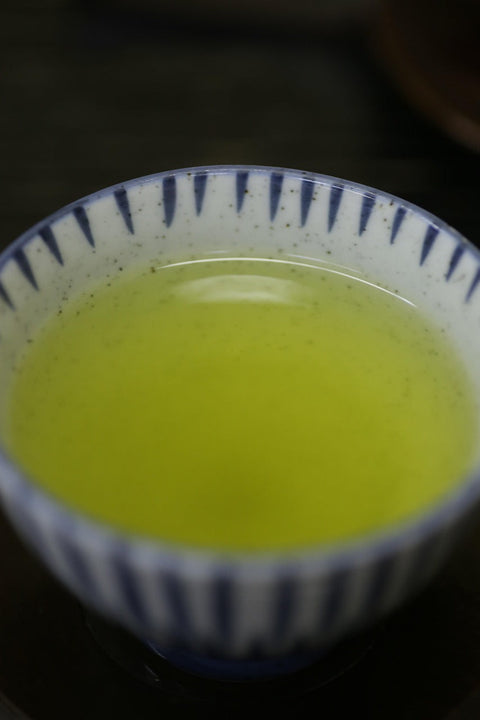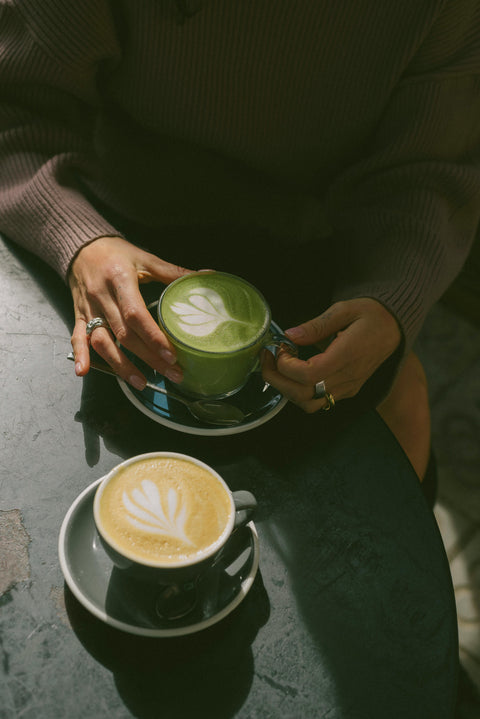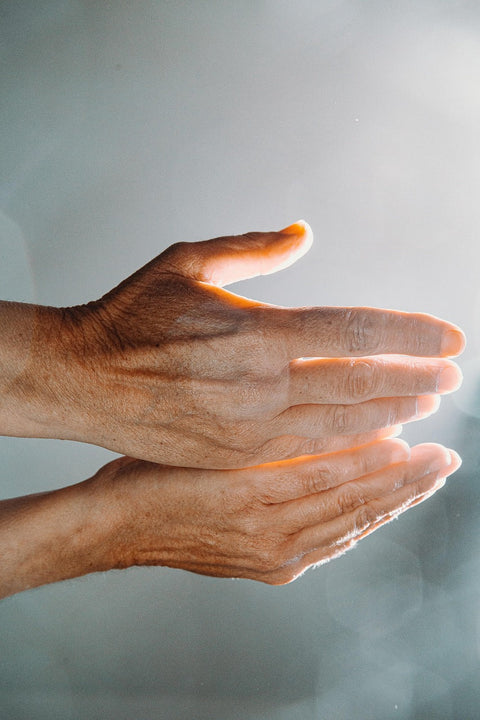
Matcha and sencha are both green teas from Japan — but they’re far from the same. While they come from the same plant (Camellia sinensis), they differ in how they’re grown, processed, prepared, and even how they affect the body.
If you’ve ever been unsure whether to choose matcha or sencha, this guide will help you understand the real differences and decide which one fits your lifestyle best.
What Is Matcha?
Matcha is a finely ground green tea powder, made from specially cultivated shade-grown tea leaves known as tencha. Unlike regular tea, where you steep and discard the leaves, matcha is whisked into water or milk — meaning you consume the entire leaf.
Matcha is traditionally used in Japanese tea ceremonies and has gained popularity worldwide for its bold flavour, creamy texture, and calming yet energising effects.
What Is Sencha?
Sencha is the most common type of green tea in Japan, representing about 80% of the country’s green tea production. The tea leaves are grown in full sunlight, then harvested, steamed, rolled, and dried.
Sencha is brewed as a loose-leaf tea and steeped in hot water. The resulting liquid is clear and bright, with a fresh, grassy, and sometimes slightly astringent flavour.
Key Differences Between Matcha and Sencha
|
Category |
Matcha |
Sencha |
|
Growth Conditions |
Shade-grown (3–4 weeks before harvest) |
Grown in full sunlight |
|
Processing Method |
Steamed, de-stemmed, and stone-ground to powder |
Steamed, rolled, and dried as whole leaves |
|
Form |
Powdered tea (you drink the whole leaf) |
Loose-leaf tea (you steep and discard leaves) |
|
Preparation |
Whisked into water |
Steeped in hot water |
|
Flavour Profile |
Creamy, umami-rich, smooth, slightly bitter |
Light, grassy, fresh, with mild bitterness |
|
Caffeine Level |
Higher (typically 60–70 mg per serving) |
Lower (about 20–30 mg per cup) |
|
Antioxidant Content |
Very high (EGCG, L-theanine, chlorophyll) |
High (but less than matcha) |
|
Common Uses |
Lattes, tea ceremonies, smoothies, desserts |
Daily sipping, mealtime tea, cold brew |
 Matcha: The Ritual Tea
Matcha: The Ritual Tea
Matcha offers a more concentrated dose of green tea's natural compounds — especially caffeine, L-theanine, and chlorophyll. Because you consume the whole leaf, you receive more antioxidants and amino acids per serving.
Its rich, full-bodied flavour and frothy texture make it ideal for those who enjoy mindful rituals, morning lattes, or plant-based energy boosts.
 Sencha: The Everyday Tea
Sencha: The Everyday Tea
Sencha is lighter, cleaner, and more refreshing. It’s ideal for sipping throughout the day, especially with meals, and is less likely to overstimulate. It also contains catechins and antioxidants, though in smaller amounts than matcha.
For those who enjoy a more traditional loose-leaf brewing experience and a milder taste, sencha is a perfect choice.
Which Should You Choose?
Choose Matcha if you:
-
Want more antioxidants and nutrients per cup
-
Prefer a bold, creamy, and full-bodied drink
-
Are looking for sustained focus and calm energy
-
Enjoy lattes or versatile preparation options
Choose Sencha if you:
-
Prefer light, refreshing, steeped tea
-
Want something gentle on the system
-
Enjoy sipping tea throughout the day
-
Prefer traditional brewing with a teapot or infuser
Can You Drink Both?
Absolutely. Many people drink matcha in the morning for its calm energy, and sencha in the afternoon or evening for gentle hydration and clarity. Both can be part of a balanced tea lifestyle.
At Forest Cloud, we specialise in ceremonial-grade and premium matcha, but we also support the growing appreciation for other forms of green tea like sencha — especially as more tea lovers explore variety and origin.
Matcha and sencha each offer a unique experience. One is bold and immersive; the other is light and refreshing. Whether you prefer the grounding ritual of matcha or the simplicity of sencha, understanding their differences can help you make more intentional, enjoyable tea choices.
Browse Forest Cloud’s matcha collection here and discover what fits your rhythm best.





